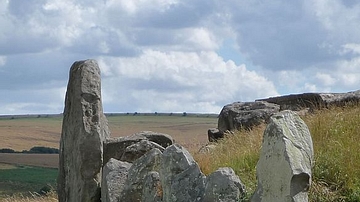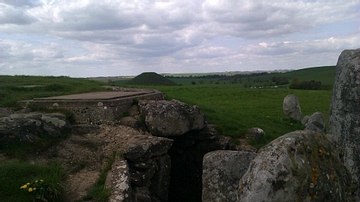Search Images
Browse Content (p. 1288)

Image
Chinese Jade Cormorant
A Chinese jade plaque of a cormorant and fish. 1100-900 BCE. Height: 4 cm. (British Museum, London)

Image
Chinese Cong
A Chinese cong of jade, a ritual object commonly found in tombs but of unknown function. Unknown date but probably Neolithic. Height: 12.9 cm. (British Museum, London)

Image
Zhou Dynasty Jade Dragon
A Chinese jade dragon. Zhou Dynasty, 5th-4th century BCE. Height: 9 cm.
The British Museum, London.

Image
Ryujin
A 19th-century illustration of Ryujin, the dragon king and sea god of Japanese mythology. Here he is chasing the princess Tamatori.
National Museum, Warsaw.

Image
Sarsen Stones, West Kennet Long Barrow
Outside of West Kennet Long Barrow, Wiltshire, U.K., showing the sarsen stones of the forecourt/facade. 3,500-2,700 BCE.

Image
Stoney Littleton Long Barrow
The entrance of long barrow at Stoney Littleton, Somerset, U.K. 3,500-2,700 BCE.

Image
West Kennet Long Barrow
Entrance and forecourt/facade of West Kennet Long Barrow, Wiltshire, U.K. 3,500-2,700 BCE.

Image
Sea Routes from Ancient Japan to China
A map illustrating possible sea routes used for political and cultural embassies from ancient Japan to Tang Dynasty China.

Image
Lydia Electrum Stater
Electrum coin depicting an uncertain king of Lydia, early 6th century BCE.
Obverse: Head of a roaring lion with multiple rays of the sun on its forehead.
Reverse: Double incuse punch.

Image
Fire
Fire